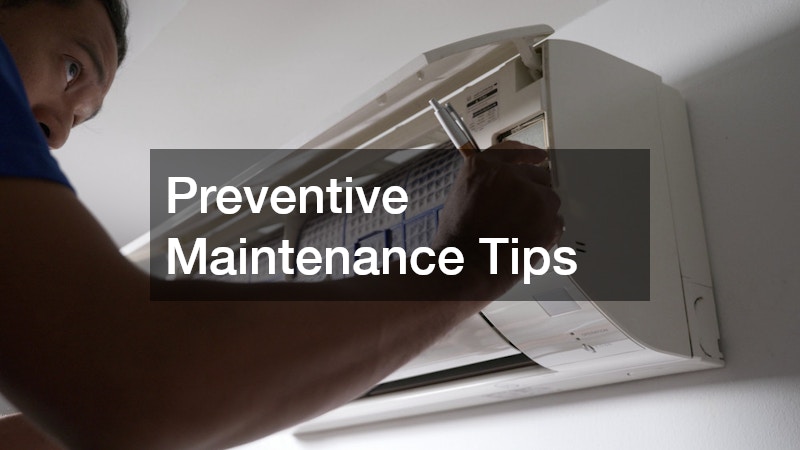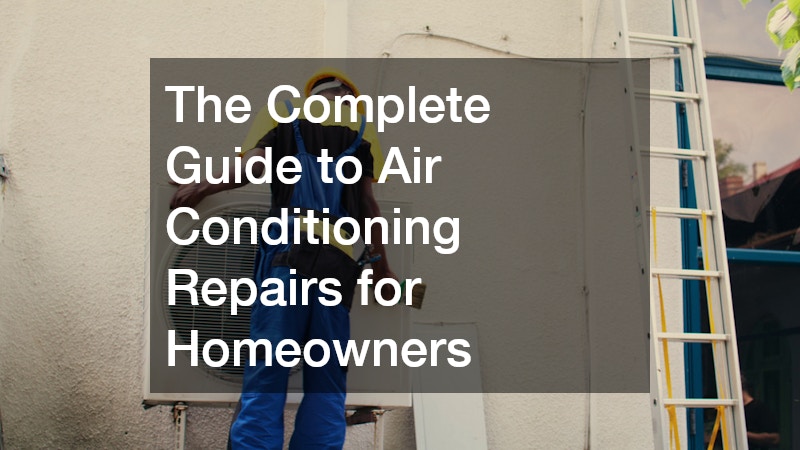As the weather heats up, ensuring your home remains cool and comfortable becomes a priority. A well-functioning air conditioning system can make a world of difference in maintaining a pleasant indoor climate. However, like any home appliance, air conditioning systems may require maintenance and repairs to function optimally. Understanding the basics of air conditioning repairs can save homeowners from costly replacements and contribute to the longevity of their systems. This guide is designed to provide homeowners with comprehensive insights into tackling common air conditioning issues effectively. Understanding how an air conditioning system operates is fundamental to diagnosing potential issues. At its core, an air conditioning system cools indoor spaces by removing heat from inside and releasing it outside. The refrigerant is the key component, cycling in a closed loop to carry heat through various stages of compression and expansion. Refrigerants absorb heat from indoor air and subsequently release it outdoors, effectively cooling the home. Regular maintenance of refrigerant levels and ensuring the system is leak-free is crucial for efficient cooling. Central to an air conditioner’s operation are its four main components: the evaporator coil, compressor, condenser coil, and expansion valve. Each part plays a distinct role: the evaporator coil absorbs heat, the compressor compresses the refrigerant gas, the condenser coil releases heat to the outside air, and the expansion valve reduces refrigerant pressure. Maintaining these components is critical for effective air conditioning repairs. Homeowners should familiarize themselves with the basic functions and locations of these components within their units. In addition to mechanical components, air circulation is integral to an air conditioner’s efficiency. Proper airflow over the evaporator coil is necessary to absorb maximum heat from the room. Dirty or clogged air filters can impede this airflow, reducing efficiency and putting strain on the system. Regularly replacing or cleaning air filters is one of the simplest yet most effective air conditioning repairs homeowners can perform. Ensuring vents are unobstructed will also promote optimal circulation. Many homeowners encounter similar problems with their air conditioning systems, such as insufficient cooling and irregular temperature distribution. One frequent cause is low refrigerant levels, often due to leaks, which require professional attention to repair and recharge the system. Additionally, aging mechanical components like compressors and fans can wear out over time, leading to reduced efficiency or system failure. Detecting these issues early and addressing them can prevent more severe and costly repairs. An often overlooked issue relates to faulty thermostat operation. An inaccurate thermostat can cause an air conditioning system to cycle on and off at inappropriate times, leading to increased energy usage and decreased comfort. Homeowners should ensure their thermostats are correctly calibrated and consider upgrading to programmable or smart thermostats for more precise control of their home environments. Regularly checking thermostat settings can prevent unnecessary air conditioning repairs and inefficiencies. Another common problem is the buildup of dirt and debris in the system. This can occur in the condenser coils, evaporator coils, or air ducts and can significantly affect system performance. Cleaning coils and ducts should be a part of regular maintenance routines. Homeowners can manage some cleaning tasks themselves, such as gently washing condenser coils, but more comprehensive cleanings might require professional services. Addressing these cleanliness issues proactively is a key aspect of effective air conditioning repairs. Incorporating routine preventive maintenance can greatly reduce the need for emergency air conditioning repairs. Scheduling annual professional check-ups ensures all components are in good working order. During these inspections, technicians can identify potential problems before they worsen. Preventive maintenance also includes regularly changing air filters, cleaning coils, and verifying system settings to enhance efficiency and comfort. Staying on top of maintenance tasks will extend the life of the air conditioning unit and provide peace of mind. Homeowners should also focus on external factors contributing to unit performance. Ensuring that the area surrounding the outdoor condenser unit is free of obstructions and debris will promote better airflow and heat exchange. Trim nearby foliage and regularly clear fallen leaves or other debris from around the unit. By maintaining an uncluttered space, homeowners can significantly enhance their unit’s efficiency and reduce the potential need for extensive air conditioning repairs. In addition to mechanical maintenance, adjusting indoor habits can help optimize air conditioning performance. For instance, using ceiling fans to circulate cool air can ease the burden on the air conditioner, especially during peak heat hours. Setting thermostats to a slightly higher temperature or utilizing programmable settings can also reduce strain on the system. These simple tweaks, combined with regular maintenance, are valuable strategies for minimizing the need for frequent air conditioning repairs. How Air Conditioning Works
Common Air Conditioning Issues
Preventive Maintenance Tips

